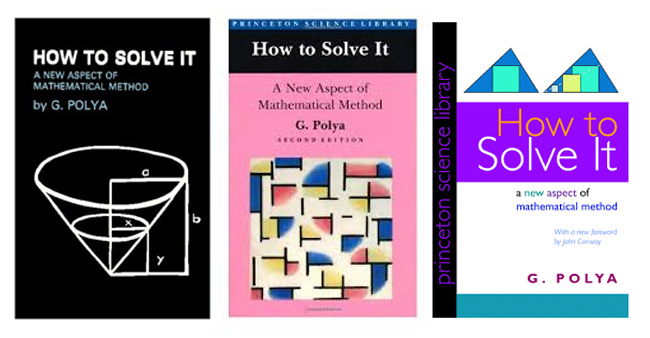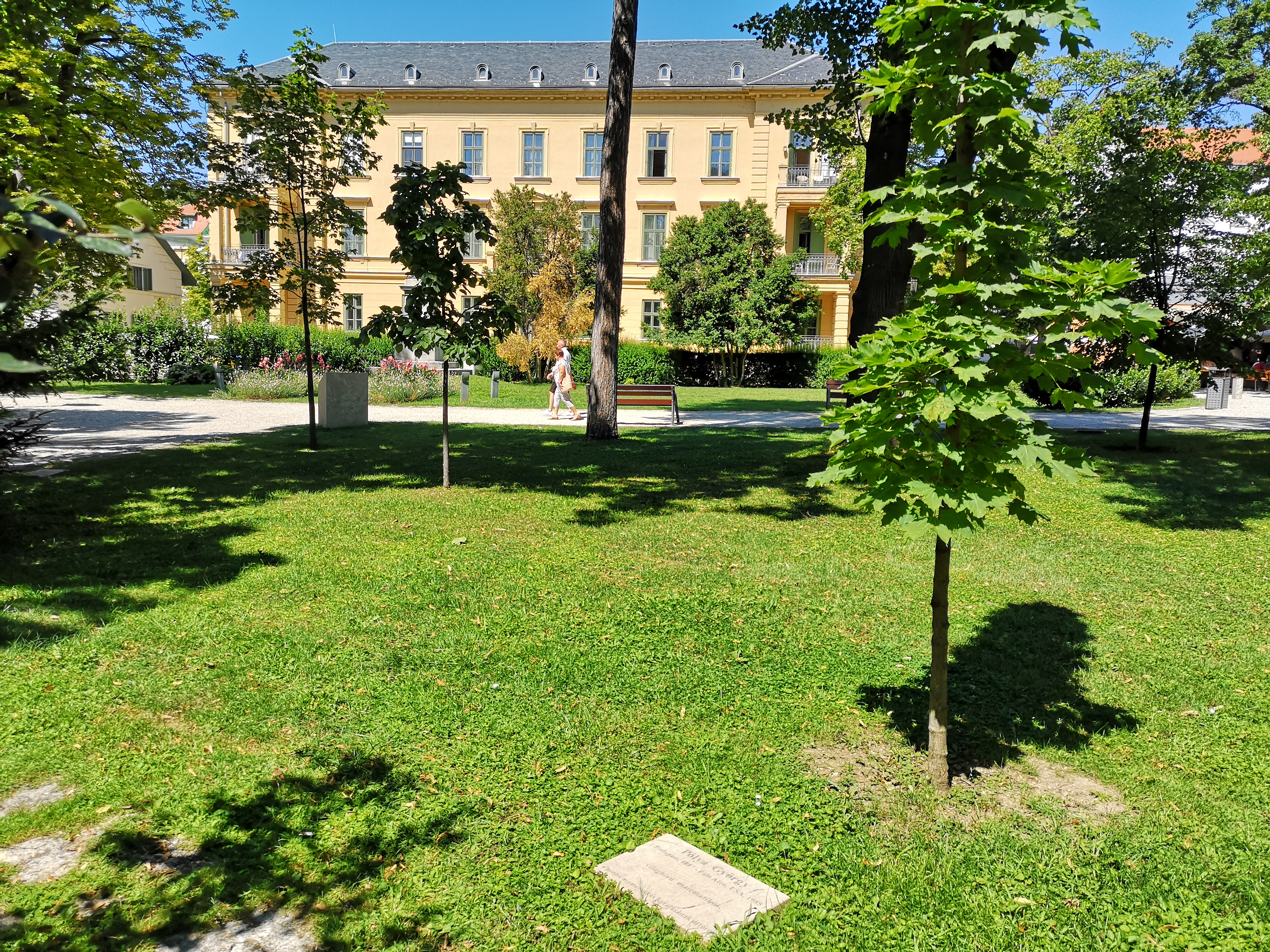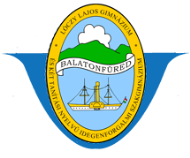The Anatomy of Thought – Student Challenge
2nd International Heuristics Conference: Motivating, Orienting and Modeling Invention
Balatonfüred, August 30-31, 2019.
http://heurisztika.btk.mta.hu/en/
How is thinking and talking related in problem-solving? How our wordless train of thought does arrive at a solution? How can we put out our ideas from our heads and present them in such ways that others can understand them following our line of reasoning?
In our second student program, we challenge individual students just as student groups to present their personal or group-wise ways to genuine solutions of problems. We expect to spell out how they came to their conclusions representing the road leading from the beginning thoughts to their arrival to a solution, or the lack of it, in such a manner that other thinkers can best understand it.
The Challenge addresses the following questions: What role manipulatives and our embodied gestures and practices play in spelling out our problem-solving procedures? What knowledge organizing tools we have for capturing and recording our steps towards crucial points and how can we present our way to new discoveries and insights?
The applicants may select the knowledge organizing tools that they use for the purpose of making their “Anatomy of Thoughts” comprehensible and representable. They can decide what methods and instruments are the best for this purpose ranging from pen and pencil visualizations or video recordings through-enhancing digital environments or augmented reasoning to personal virtual presentations or group-shows.
We only present the problems and suggest some exemplary tools from a possible toolbox that may be useful. The applicants are expected to do their own research and develop their own inventory that fits the best the representation of their own ways to their insights.
The Jury will evaluate not the solutions themselves but the effort and success of the applicants in making their problem solving comprehensible and achieving a traceable reproduction of their thinking process. “Dead-ends” are just as welcome as new discoveries and the point is not finding a solution but spelling out how you had arrived at finding, or not finding, it a solution.
Consequently, the assigned problems are not set tasks or word problems with predefined solutions rather challenges giving the opportunity to tell your own story of struggling with them.
We are looking forward to receiving the presentation of the solution of one of the assigned problems and a freely chosen problem from each applicant. The assigned problems will be published on July 15, 2019, on this website of the conference. See the instructions for submission of the presentations in accordance with the detailed tender conditions specified below. The deadline for submission is August 25, 2019 midnight.
Some suggested tools you can (optionally) use:
https://www.geogebra.org/?lang=hu
http://www.visual-literacy.org/periodic_table/periodic_table.html
https://debategraph.org/Stream.aspx?nid=61932&vt=ngraph&dc=focus
https://screencast-o-matic.com/plans
https://www.nchsoftware.com/software/recording.html
https://www.sodapdf.com/blog/best-free-recording-software/
https://www.thepodcasthost.com/editing-production/producing-editing-an-audio-drama-podcast/
https://play.google.com/store/apps/details?id=ru.knnv.geometrycalcfree&hl=en_US
Conditions of application
Tenders that arrive by August 25, 2019, 24:00 hour are going to be considered. Apply by sending a message attaching a decoding posy-file to This email address is being protected from spambots. You need JavaScript enabled to view it.">This email address is being protected from spambots. You need JavaScript enabled to view it. as follows.
Applicant(s) are expected to submit a password-protected Word doc or docx , or PDF file containing
1) the name,
2) year of birth,
3) email address of the applicant(s) (and if willing, their phone number),
4) their educational institution,
5) their grade, and
6) name and
7) contact details of (at least one of) their teacher(s)/ trainer(s).
Please specify in the filename the posy that will be referenced in all further submissions!
Applicants are to present the solution of one of the assigned tasks and a mathematical problem of their choice based on their own solution.
In another (not password protected) descriptive Word or PDF file containing only the posy but not the name of the applicants, please submit (to This email address is being protected from spambots. You need JavaScript enabled to view it.) that which assigned task was chosen and describe the freely chosen problem including the used processing and presentation method. (The presentation of the processing of these two tasks may be different; one may be submitted digital material and the other a personal presentation.)
The process of problem-solving can be presented
1) in digital form, in the way that the applicant(s) describe the processing and presentation method in the submitted descriptive Word or PDF file, or
2) in the form of a personal presentation as part of the student program “An Anatomy of Thought – Student Challenge” starting at 9:45 in Vaszary Gallery, on September 1, 2019, in Balatonfüred.
The time available for personal presentation will be max. 12 minutes. The presentations, if permission is received, will be video recorded.
It is also possible to use digital devices (notebook, software, projector) in the case of personal presentations. Please specify the devices you want to use in the submitted descriptive (Word or PDF) file.
All completed digital materials must be submitted by the applicant (s) no later than 25 August 2019, 24:00, providing access to them for evaluation. Submission is by uploading the digital materials to the applicant’s personal Google Drive and providing access to them by sharing the files with This email address is being protected from spambots. You need JavaScript enabled to view it. or by choosing a similar access-providing solution (e.g. Dropbox).
It is the responsibility of the applicant(s) to provide proper access to their submissions and ensure the playability or downloadability of their digital materials.
The submissions received will be evaluated on September 1, 2019, in Vaszary Gallery, Balatonfüred.
Besides issuing a certificate of participation to each applicant, we plan to award a total of 50-100.000 HUF depending on the quality and quantity of outstanding applications.
Assigned Problems:
- Construct a triangle that has exactly the same area as a given quadrilateral. Construct as many different triangles as you can. Explain your construction methods. How did you come up with this idea? Why does it work? Generalization challenge: How could you construct a triangle that has the same area as a given polygon of many vertices (pentagon, hexagon, etc.)?
- Suppose that there are 100 ambassadors invited into a banquet. Every ambassador has at most 49 enemies. Can the ambassadors be seated around a round table so that nobody sits next to their enemy? Give more than one solution and spell out how you discovered it!
- Agnes runs on the same route every morning, starting at the same time. Her route includes running through a bridge that has railroad tracks, too. Each morning there is a passenger train crossing the bridge while Agnes is running. Agnes knows that the train whistles when she has passed 3/8 of the length of the bridge. She has experienced several times that if she keeps running with full speed forward, the train reaches her exactly at the moment when she gets to the further end of the bridge. On the other hand, if she turns around at the moment she hears the whistle and keeps running with full speed towards the closer end of the bridge, she meets the train exactly at the closer end of the bridge. The “full speed” Agnes can maintain is 7 miles per hour. What is the speed of the train?
- Regarding a group of n individuals (n>2) we know two parameters: first, the number of the relationships in the group; second, the average number of offsprings in a given reproductive cycle.
a) Investigate (in terms of n, m, and k) the conditions for „long-term” (i.e., at least m>2 cycles) survival of the group if the average lifespan of a group member is k.
b) What other parameters may influence the solution and how? E.g., what happens if we do not only know the average number of offsprings but also their distribution? Construct models which take into account these further parameters. - Andrew is 185 cm tall. He wants to hang a mirror in his bathroom so that he could see his whole body in the mirror when he stands in front of the mirror. Help him! The longer the mirror, the more expensive it is. What is the shortest mirror that would do the job? Does it depend on the size of his bathroom? Does it matter how he hangs the mirror? How long is the shortest mirror in which both Andrew and his 1m tall daughter can fully see themselves?
+ A problem of your choice presenting your attempts of its solution.
Remark: Describe the problems you encountered during the solution. If a problem is not unambiguous solve it in all possible sense! Record, reproduce and explain your individual or collective thinking process!
This book may help you:

If you are in Hungary you can read it nearby the George Polya Memorial Tree in the memorial tree park of the Tagore promenade in Balatonfüred.







